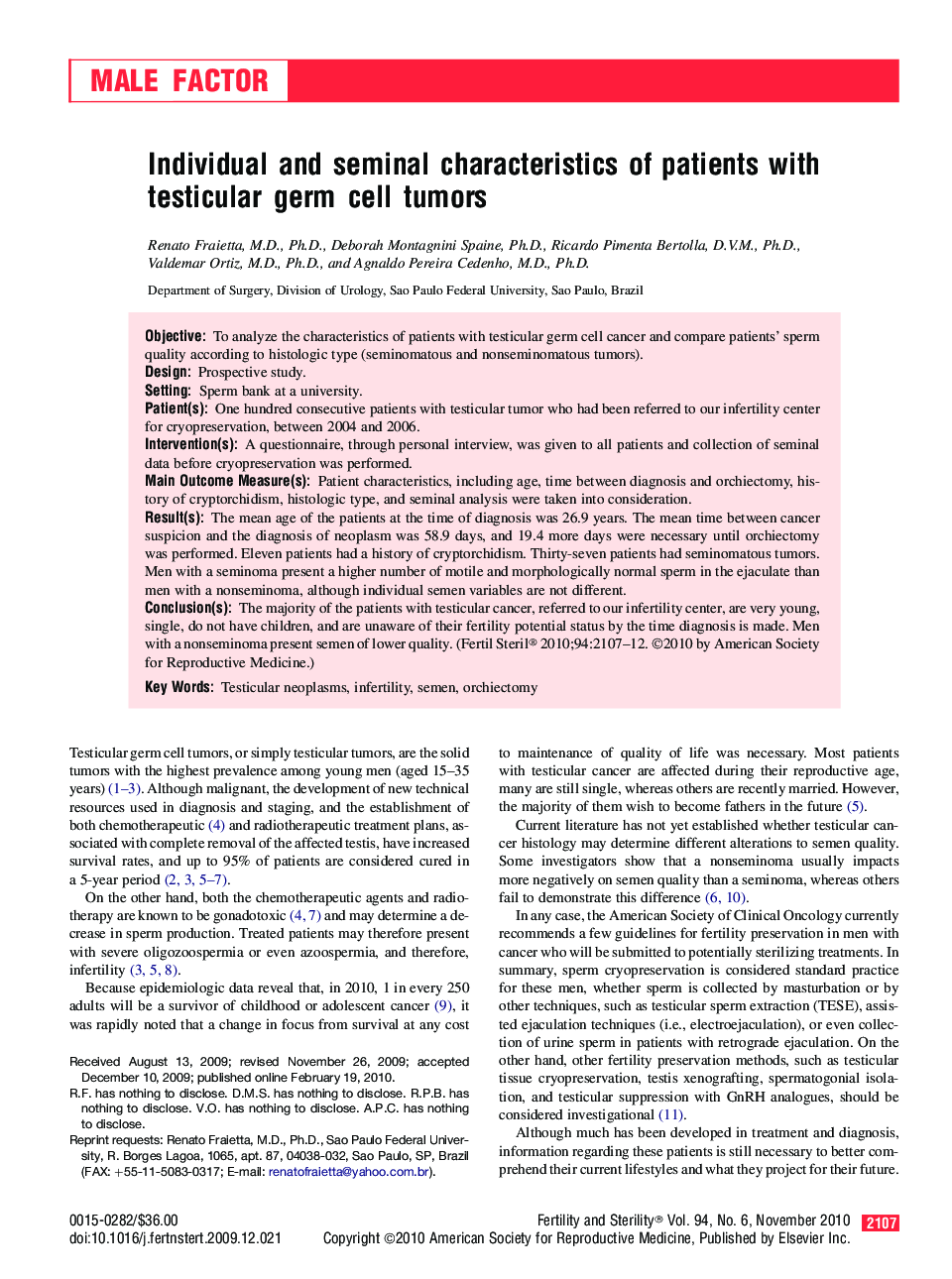| Article ID | Journal | Published Year | Pages | File Type |
|---|---|---|---|---|
| 3932830 | Fertility and Sterility | 2010 | 6 Pages |
ObjectiveTo analyze the characteristics of patients with testicular germ cell cancer and compare patients' sperm quality according to histologic type (seminomatous and nonseminomatous tumors).DesignProspective study.SettingSperm bank at a university.Patient(s)One hundred consecutive patients with testicular tumor who had been referred to our infertility center for cryopreservation, between 2004 and 2006.Intervention(s)A questionnaire, through personal interview, was given to all patients and collection of seminal data before cryopreservation was performed.Main Outcome Measure(s)Patient characteristics, including age, time between diagnosis and orchiectomy, history of cryptorchidism, histologic type, and seminal analysis were taken into consideration.Result(s)The mean age of the patients at the time of diagnosis was 26.9 years. The mean time between cancer suspicion and the diagnosis of neoplasm was 58.9 days, and 19.4 more days were necessary until orchiectomy was performed. Eleven patients had a history of cryptorchidism. Thirty-seven patients had seminomatous tumors. Men with a seminoma present a higher number of motile and morphologically normal sperm in the ejaculate than men with a nonseminoma, although individual semen variables are not different.Conclusion(s)The majority of the patients with testicular cancer, referred to our infertility center, are very young, single, do not have children, and are unaware of their fertility potential status by the time diagnosis is made. Men with a nonseminoma present semen of lower quality.
